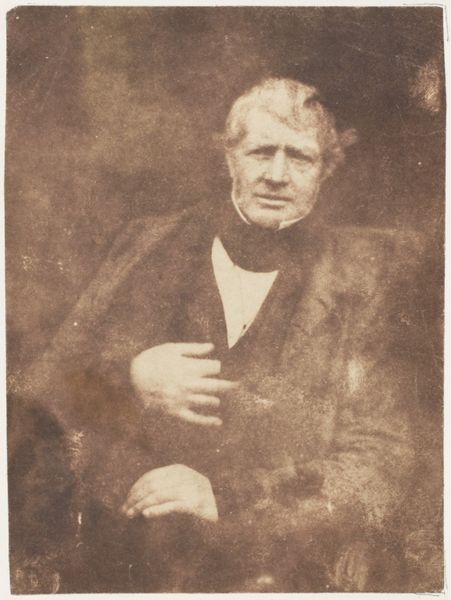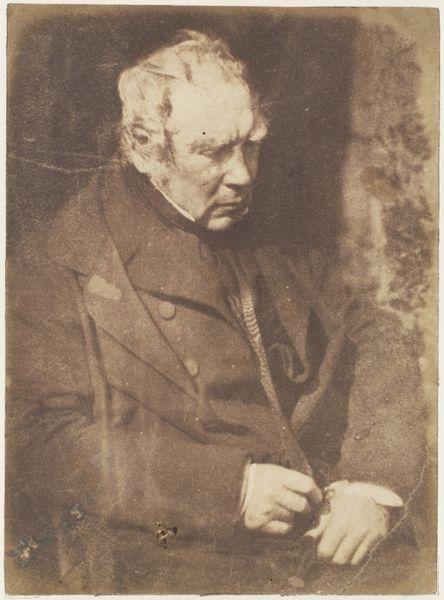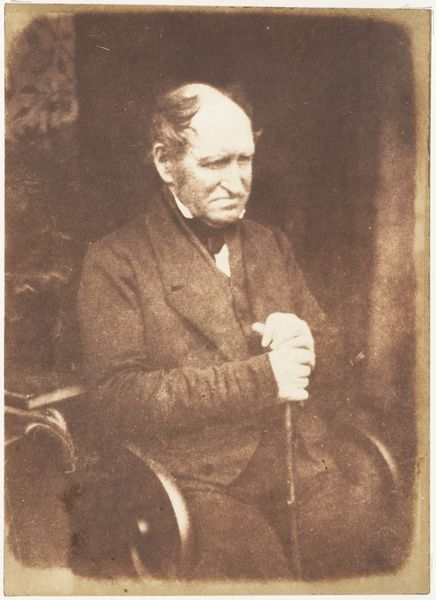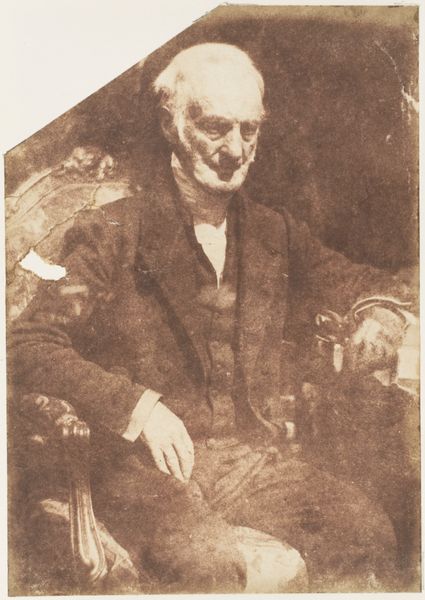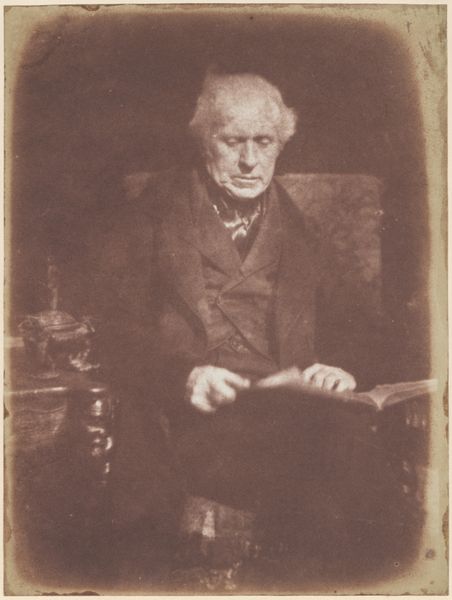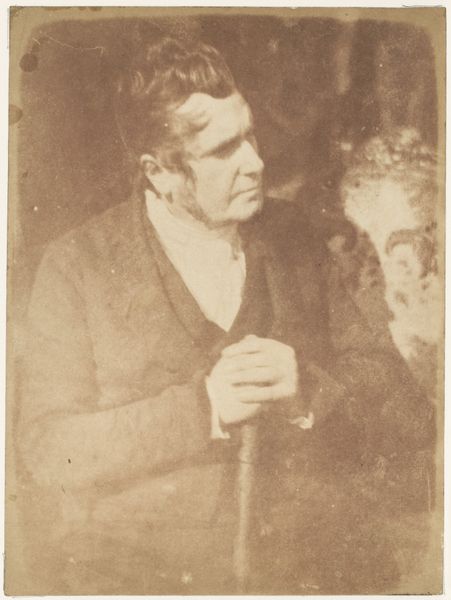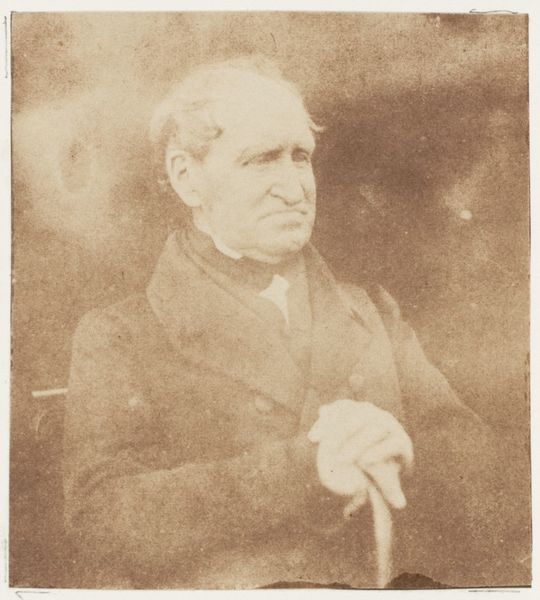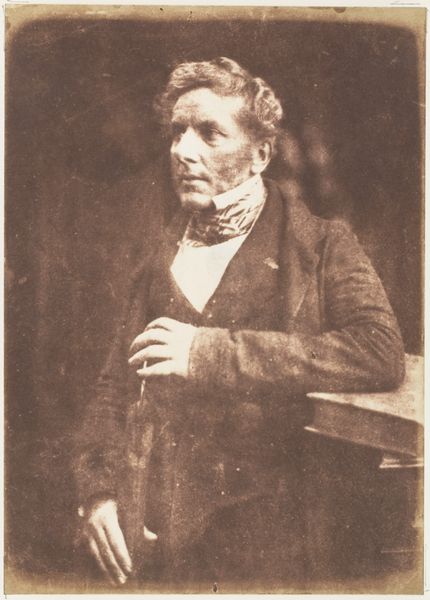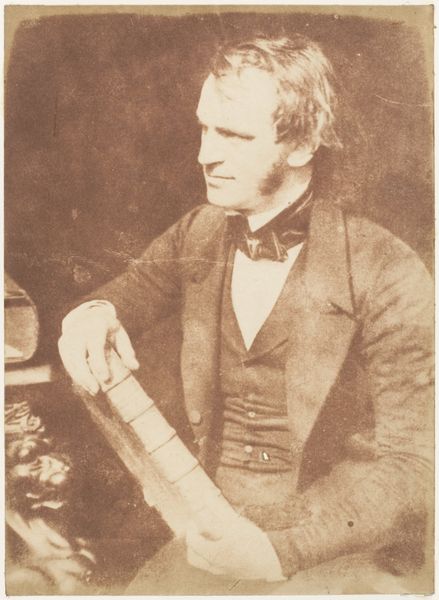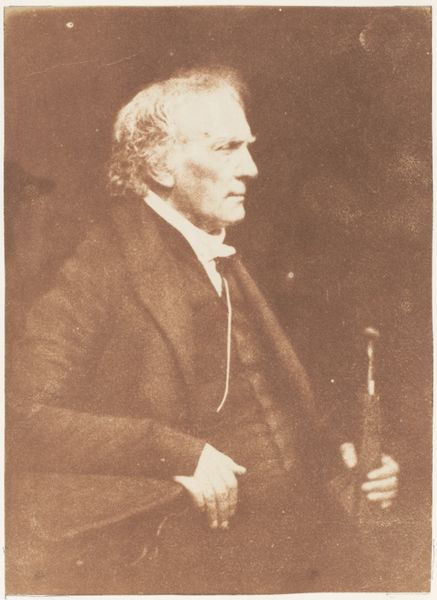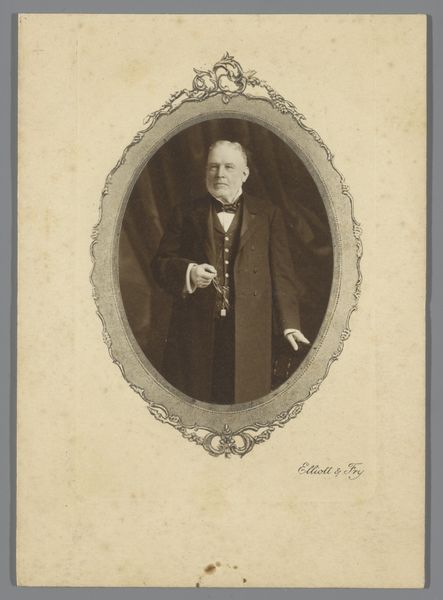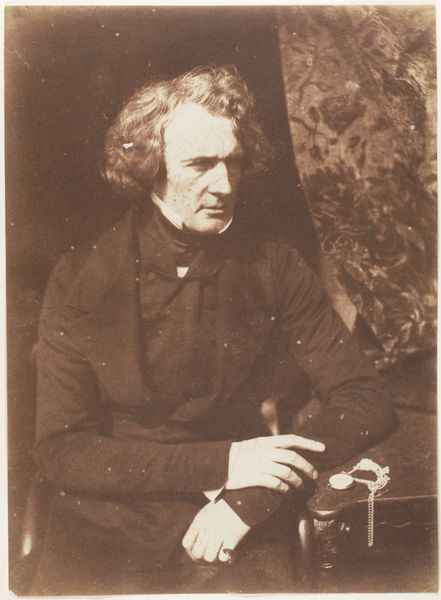
#
portrait
#
photo of handprinted image
#
toned paper
#
light pencil work
#
wedding photograph
#
photo restoration
#
charcoal drawing
#
curved letter used
#
pencil drawing
#
men
#
watercolour illustration
#
watercolor
Copyright: Public Domain
Curator: So, here we have "Thomas Kitchenham Staveley, M.P. Ripon," a portrait by Hill and Adamson, dating from 1843-1847. The photograph is part of the Metropolitan Museum of Art's collection. Editor: It’s amazing to think how early this photograph was taken! It looks like a study of texture almost – the toned paper gives such a unique depth. What's striking to me is the material process and what it says about early photographic practices. How did they even create something like this? Curator: Well, understanding the context of its creation is crucial. Consider the calotype process they employed: coating paper with silver iodide, exposing it in a camera, and then developing it. Each step required meticulous labour and specific materials – from the chemicals to the paper itself. It wasn't a mass-produced commodity like today's images. The imperfections, the subtle tonal variations, are all testaments to its handcrafted nature. Notice, for instance, the paper's texture. Does it strike you as deliberate, or a consequence of material limitations? Editor: I’d say both. There’s a beauty in the accidental, right? It’s amazing to consider it not just a representation, but also an artifact imbued with labour. In the pre-industrial era the way things were made surely was viewed differently compared to now. Do you think the elite were conscious of this distinction? Curator: Absolutely. Early photography, with its inherent limitations and expensive materials, was a pursuit largely reserved for the upper classes. The very act of creating a photographic portrait became a signifier of status. Editor: Right. So, it isn’t just about capturing a likeness, but displaying social capital through a specific materiality and the labour it demanded. It redefines "portraiture" altogether. Curator: Precisely! I wonder, does analyzing the material aspects of this work deepen our understanding of its purpose? Editor: Definitely! Thinking about the 'how' and the 'why' of its construction offers a new appreciation beyond just the visual. Curator: It helps move beyond simply admiring the aesthetics and invites us to investigate its relationship to social and economic realities. Editor: That makes sense, thank you! I see the portrait in a totally new light now.
Comments
No comments
Be the first to comment and join the conversation on the ultimate creative platform.
